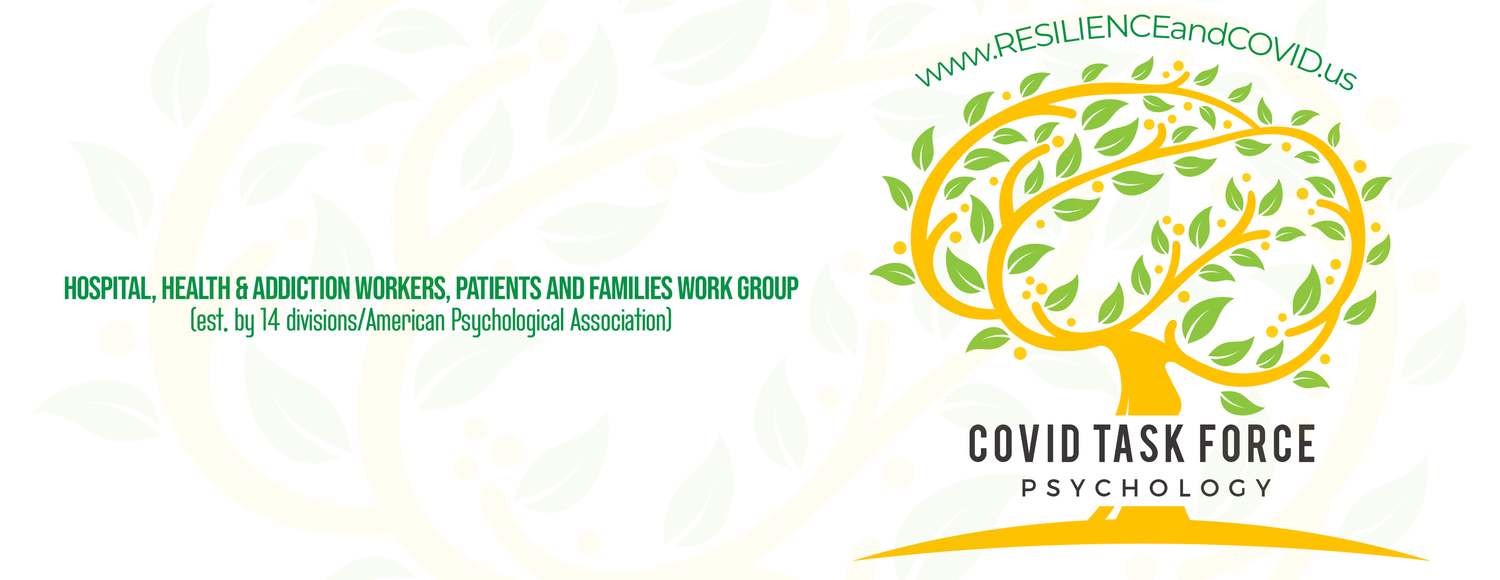Children at Risk for Maltreatment During COVID-19 Pandemic
Parents’ struggles may signal a grim outlook for children spending time at home.
(This is Part 2 of a series on parenting during COVID. See Part 1 here.)
Why might child maltreatment rise during the pandemic?
Warning sirens blared loudly at the start of the COVID-19 pandemic: Will children be safe at home? For some families, parents may appreciate extra time at home with their children.
But for other families, the pandemic brought massive economic turmoil. Parents were abruptly cut off from resources—separated from extended family, friends, and childcare support. Children were out of school, away from structure, friends, and—critically—away from the oversight of teachers.
Child maltreatment often rises after natural disasters (Seddighi et al., 2019) and economic downturns like the Great Recession (Brooks-Gunn et al., 2013). Unemployment, food insecurity, and financial stress increase parents’ risk of child maltreatment (Slack et al., 2011). Such economic pressure can strain parents’ mental health, which then leads to more child abuse and neglect (Yang, 2015).
Stress is well-known to increase the risk of child abuse (Tucker et al., 2017) and neglect (Slack et al., 2011). Parents with less social support are also more likely to abuse (Rodriguez et al., 2018) or neglect their children (Freisthler et al., 2014).
Source: Tumisu/Pixabay
The COVID-19 pandemic poses unprecedented and unique dangers for maltreatment. COVID-19 led to historic unemployment—the highest since the Great Depression. With schools closed, families who relied on school meals suddenly scrambled to feed their children in the midst of grave economic uncertainty. Parents were isolated with “stay-at-home” guidelines while simultaneously dealing with economic stress and responding to children’s reactions to their own disruptions and distress.
The most frequent reporters of child maltreatment—teachers, doctors, mental health professionals—suddenly lost access to children during this pandemic. Official reports to child welfare in many states plummeted (Jonson-Reid et al., 2020) even while news reports described increases in hospital visits and hospitalizations from child abuse (Da Silva, 2020; Woodall, 2020).
Source: Karolina Grabowska/Pexels
What does the new research suggest?
Two new studies (full information here) from early in the pandemic confirm those early warning signs (Rodriguez et al., 2020). The first study involved a national sample of 405 parents with concerning results.
For example, parents who reported they worried about their finances were twice as likely to report they were yelling at their children more often since the pandemic began and engaging in more neglect. Parents who reported more loneliness were nearly three times more likely to neglect their children and over 2.5 times more likely to report more conflict since the pandemic began. Parents who described more worry were two to three times more likely to report they were yelling, hitting, or neglecting their children.
The second study built on the first study based on reports from 106 mothers previously enrolled in a longitudinal study. Mothers who described they had increased hitting, yelling, or neglect during the pandemic had the highest scores on established measures of child abuse risk. Mothers with financial loss from a change in employment also had higher child abuse risk scores. If families had received free school meals before the pandemic, mothers reported struggling to feed their children and having more conflict with their children. And mothers who felt lonelier also felt that their parenting had become harsher—reporting more conflict, hitting, yelling, and neglect.
Most importantly, this study could compare mothers’ reports during the pandemic with their scores prior to the pandemic. Those analyses indicate that mothers’ child abuse risk and yelling had increased, and their perception that their parenting had worsened matched actual changes in their abuse risk over time.
What does this mean?
The COVID-19 pandemic has brought challenges for most Americans (see here for additional research). Families who were already struggling before the pandemic were particularly vulnerable—particularly communities of color who are also disproportionately impacted by COVID-19.
The current child welfare system is a reactive system that tends to respond to the most serious cases. A more proactive prevention approach would prevent child maltreatment in the first place (Higgins et al., 2019)—a reimagining of how we protect children from maltreatment that would incorporate some of the guidance from the Centers for Disease Control and Prevention (Fortson et al., 2016). Many state policies that support the social safety net contribute to concrete reductions in child maltreatment cases (Maguire-Jack et al., in press).
What can we do now?
If you suspect child maltreatment, consult the experts; find out how here.
For health and mental professionals working with children and families, a resource from the National Child Traumatic Stress Network on children’s reactions to trauma can be found here.
Parenting can be challenging in the best of circumstances and the COVID-19 pandemic has layered additional obstacles. Identifying resources and supports for parents and children remains critical. Parents may have questions about how their child is coping during the pandemic and whether to seek help. Check out this video and this webpage for resources.
The American Psychological Association (APA) has multiple resources about parenting found here. APA also brought together a task force, including one specifically for issues confronting children and families: follow their Facebook page for updates and check their list of resources that includes multiple websites, books, and webinars, with links.
Given the stressors introduced by the pandemic, check out these APA resources on PTSD and trauma as well as stress, anxiety, and grief, among other topics.
For those who are parents and professionals interested in promoting policy changes because of COVID-10 for children’s mental health, check out this policy guide.
Read article on Psychology Today: https://www.psychologytoday.com/us/blog/psychological-trauma-coping-and-resilience/202101/children-risk-maltreatment-during-covid-19
References
Brooks-Gunn, J., Schneider, W., & Waldfogel, J. (2013). The Great Recession and the risk for child maltreatment. Child Abuse & Neglect, 37, 721-729. https://doi.org/10.1016/j.chiabu.2013.08.004
Da Silva, C. (2020, March 22). Texas hospital child abuse cases rise in Covid-19 outbreak: “It’s hard to think that it’s just coincidental’. Newsweek. https://www.newsweek.com/texas-hospital-child-abuse-cases-rise-covid-19-outbreak-1493642
Fortson, B. L., Klevens, J., Merrick, M.T., Gilbert, L.K., & Alexander, S.P. (2016). Preventing child abuse and neglect: A technical package for policy, norm, and programmatic activities. Centers for Disease Control and Prevention. https://www.cdc.gov/violenceprevention/pdf/CAN-Prevention-Technical-Package.pdf
Freisthler, B., Johnson-Motoyama, M., & Kepple, N. J. (2014). Inadequate child supervision: The role of alcohol outlet density, parent drinking behaviors, and social support. Children and Youth Services Review, 43, 75-84. https://doi.org/10.1016/j.childyouth.2014.05.002
Higgins, D. J., Lonne, B., Herrenkohl, T.I. & Scott, D. (2019). The success and limitations of contemporary approaches in child protection. In B. Lonne, D. Scott, D. Higgins, & T.I. Herrenkohl (Eds.), Re-visioning public health approaches for protecting children (pp. 3-17). Springer Nature.
Jonson-Reid, M., Drake, B., Cobetto, C., & Ocampo, M. G. (2020, April 14). Child abuse prevention month in the context of Covid-19. Washington University Center for Innovation in Child Maltreatment Policy, Research and Training. https://cicm.wustl.edu/child-abuse-prevention-month-in-the-context-of-covid-19/
Maguire-Jack, K., Johnson-Motoyama, M., & Parmenter, S. (in press). Economic supports for working parents: The relationship of TANF, child care subsidy, SNAP, and EITC to child maltreatment prevention. Aggression and Violent Behavior.
Rodriguez, C. M., Lee, S. J., Ward, K. P., & Pu, D. F. (2020). The perfect storm: Hidden risk of child maltreatment during the Covid-19 pandemic. Child Maltreatment. Online first: https://doi.org/10.1177/1077559520982066
Rodriguez, C.M., Silvia, P.J., & Pu, D.F. (2018). Predictors of change in mothers’ and fathers’ parent-child aggression risk. Child Abuse & Neglect, 86, 247-256. https://doi.org/10.1016/j.chiabu.2018.09.008
Seddighi, H., Salmani, I., Javadi, M. H., & Seddighi, S. (2019). Child abuse in natural disasters and conflicts: A systematic review. Trauma, Violence, & Abuse, 22, 176-185. https://doi.org/10.1177/1524838019835973
Slack, K. S., Berger, L. M., DuMont, K., Yang, M., Kim, B., Ehrhard-Dietzel, S., & Holl, J. L. (2011). Risk and protective factors for child neglect during early childhood: A cross-study comparison. Children and Youth Services Review, 33, 1354-1363. https://doi.org/10.1016/j.childyouth.2011.04.024
Tucker, M. C., Rodriguez, C. M., & Baker, L. R. (2017). Personal and couple level risk factors: Maternal and paternal parent-child aggression risk. Child Abuse & Neglect, 69, 213-222. https://doi.org/10.1016/j.chiabu.2017.04.030
Woodall, C. (2020, May 13). As hospitals see more severe child abuse injuries during coronavirus, ‘the worst is yet to come.’ USA Today. https://www.usatoday.com/story/news/nation/2020/05/13/hospitals- seeing-more-severe-child-abuse-injuries-during-coronavirus/3116395001/
Yang, M. (2015). The effect of material hardship on child protective service involvement. Child Abuse & Neglect, 41, 113-125. https://doi.org/10.1016/j.chiabu.2014.05.009


